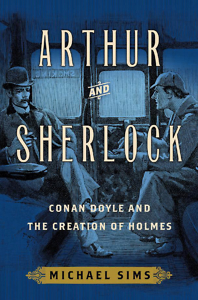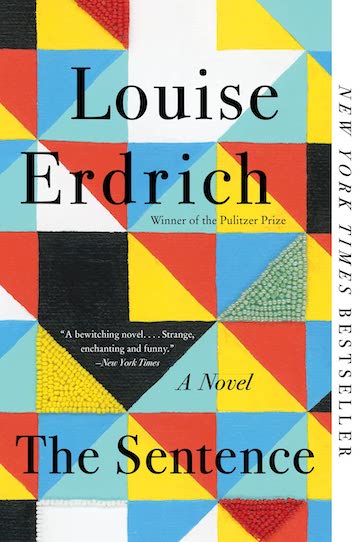A Super-Man
Book excerpt: Arthur and Sherlock: Conan Doyle and the Creation of Holmes
“So now behold me, a tall strongly-framed but half-formed young man, fairly entered upon my five years’ course of medical study.” ~Arthur Conan Doyle, Memories and Adventures.

Arthur Doyle led the patient into a crowded gaslit amphitheater, through a cluster of medical students surrounding Dr. Joseph Bell’s chair, and left him standing before the professor. The man’s attitude was respectful but not servile. He did not remove his hat. In a Scottish accent, he explained that he had come to Edinburgh Royal Infirmary seeking treatment for the early stages of elephantiasis.
As usual with patients, at first Dr. Bell showed no expression, in his reserved way that seemed to young Arthur how a Red Indian in North America might behave. From childhood Arthur had enjoyed tales of the American frontier, and such imagery leapt easily to mind. Bell pressed his fingertips together as he leaned back in his chair, looked the patient over, and remarked for the benefit of his students, “Well, my man, you’ve served in the army.”
“Aye, sir.”
“Not long discharged?”
“No, sir.”
“A Highland regiment?” Although he spoke with the crisp accent called “educated Edinburgh,” Bell’s high-pitched voice did not match the tanned, muscular body that made him look younger than his forty years.
“Aye, sir.”
“A non-com officer?”
“Aye, sir.”
Then came what seemed a far-fetched guess: “Stationed at Barbados?”
“Aye, sir.”
 After the patient departed, Bell explained his inferences—that the man did not remove his hat because he had been in the military, that he had not been long out of service or he would have regained civilian habits, that his air of authority indicated he had been a noncommissioned officer rather than a common soldier. And obviously he was a Scot. “As to Barbados,” he added, “his complaint is elephantiasis, which is West Indian and not British.” The patient might have contracted the disease in other parts of the British Empire—India or Afghanistan as well as the West Indies—but apparently Bell’s deduction was correct.
After the patient departed, Bell explained his inferences—that the man did not remove his hat because he had been in the military, that he had not been long out of service or he would have regained civilian habits, that his air of authority indicated he had been a noncommissioned officer rather than a common soldier. And obviously he was a Scot. “As to Barbados,” he added, “his complaint is elephantiasis, which is West Indian and not British.” The patient might have contracted the disease in other parts of the British Empire—India or Afghanistan as well as the West Indies—but apparently Bell’s deduction was correct.
Bell had received no prior information about the man other than Arthur’s note of his illness. Although he was an excellent surgeon and clinical teacher, as well as personal physician to Queen Victoria whenever she visited Scotland, Bell was most renowned for his diagnostic skills. He tended to begin an interview by deducing personal details about the patient’s illness, profession, and life by flicking his gray-eyed gaze—half-critical and half-sardonic, Arthur thought—from hat to elbows to boots. He maintained that an observant man ought to learn a great deal before the patient spoke. Regarding female patients, he went so far as to claim that doctors ought to foresee which part of her body a woman was about to discuss by her posture and how she held her hands.
When he explained his reasoning, Bell was lecturing, not inviting discussion. Few professors and students mingled at Edinburgh University in the late 1870s; sometimes no words were exchanged with individual students. Many sat or stood before the students and delivered lectures, the salient points of which were to be recorded in notes scribbled by the array of silent young men in their dark coats and ties—some mustached or bearded, but many youthfully clean-shaven like Arthur. Arthur would pay his four guineas for anatomy lectures, for example, and would be expected thereafter to diligently attend class. However, Bell was more personable, more interested in his students, than most professors. He was known as an unusually kind figure, especially to women and children, as well as to students as long as they were prepared for class.
After teaching systematic and operative surgery for years, Bell was appointed senior surgeon to the infirmary in 1878. He was among the “extra-academical instructors,” professors not directly employed by Edinburgh University whose classes were recognized as available for credit toward a degree. Bell’s own mentor, the legendary James Syme, had led a campaign to recognize extramural instruction, which had finally been authorized in 1855, while Bell was a student. Under this program, which had long been flourishing by the time Arthur enrolled in 1876, students could study with surgeons and others at the internationally renowned infirmary, as well as with other small groups of medical professionals headquartered around Surgeons Square—Park Place School, Surgeons’ Hall, Minto House School, and others. They could attend classes or other instruction at the Royal Public Dispensary, the Edinburgh Eye Infirmary, the Royal Maternity Hospital, the Sick Children’s Hospital, and elsewhere in the city. They could also study for credit in Leipzig or Paris or other recognized medical universities.
Tired-looking young men in black coats or tweed, laden with books and notebooks, poured from the gates to the hospital, tapping their walking sticks against the stones and at times stepping aside to avoid a carriage clattering down the cobblestones. Among the many wards in the grand three-winged, U-shaped Royal Infirmary building, two housed patients whose ailments were considered instructive to the students who thronged the wide central staircase, often dodging pairs of nurses carrying a patient between them in a sedan chair. I WAS NAKED AND YE CLOTHED ME, read one of the signs between Ionic columns out front, and the other I WAS SICK AND YE VISITED ME. The charity infirmary was the culmination of a century and a half of donation and subscription—and where money was short, glassmakers had glazed windows without charge and joiners had donated sashes. Completed in 1741, the infirmary was proving inadequate to succor the hordes of suffering poor, and additional buildings were rising.
For the first time in his life, Arthur felt engaged by a course and a teacher. Eager to help his mother through financial straits—at least to keep her from having to contribute to his college costs—he was trying to cram each year’s classes into a half year so that he might spend the rest of the year assisting a doctor, getting his expenses covered and gaining experience. Eager to excel and curious about almost everything, he scrawled countless notes. At times it seemed to Dr. Bell that Arthur wanted to transcribe every word he said. Often, after a patient left, the student asked the professor to repeat details so that he might get them correct.
Joe Bell—as students and friends affectionately called him—was Arthur’s favorite professor. Rather short, with angular shoulders, an aquiline nose, and a weathered, ruddy face, he was an easily recognized sight around campus and town. Even at a distance, he was known by his twitchy, uneven walk—a brisk stride conquering a limp.
Working as clerk for the famed surgeon and teacher presented quite an opportunity for an ambitious student. Tall, broad-shouldered Arthur was quick-witted, forthright, and diligent; in his late teens, he was beginning to outgrow the rebellious temper of his early years. His eyes, with their unusual two tones of blue in the iris, were as busy as his professor’s.
Arthur had admired Bell’s theatrical diagnostic routine since before beginning work in the outpatient ward. Every six months, each surgeon appointed several dressers (assistants) to help him handle the traffic. Bell chose Arthur, along with a few other trusted dressers, from among many young men. Arthur did not think of himself as an outstanding student; he had earned grades of Satisfactory in all classes except for an S-minus in clinical surgery. But Bell came to consider him one of the most promising men who had studied under him—a youngster fascinated by all aspects of diagnosis and attentive to the large implications of small details. Surgical outpatients might walk in with any sort of complaint: wounds or chronic pain, ailments ranging from respiratory to gynecological. Bell demanded that students be prepared for whatever misfortune might appear. The new infirmary was completed in 1879, and during the next year fifteen thousand patients passed through its outpatient clinic.
Arthur and other efficient clerks interviewed patients in a side room and herded them quickly in and out of Bell’s examination. He sorted as many as seventy or eighty per day, noted details about their complaint or injury, and then brought them in one by one for a consultation—during which he often thought Bell learned more with a glance than had Arthur with his queries. When Arthur began working as clerk, Bell warned him that outpatient interviews required familiarity with the uniquely Scottish slang employed by uneducated locals. Although his parents were Irish, Arthur had been born in Edinburgh—on Picardy Place, in a three-story house of modest but handsome flats near the Gothic Revival parapets of St. Paul’s and St. George’s Episcopal Church. He assured Bell that he was fluent in the local vernacular. Inevitably, one of the first patients Arthur asked about his ailment proved incomprehensible: he complained of a bealin’ in his oxter. Bell was amused to have to explain to Arthur that the location of the pain was the armpit and the problem was an abscess.
“From close observation and deduction, gentlemen,” Bell would declaim confidently, “you can make a correct diagnosis of any and every case.” He was proud of his reputation as an intelligent observer. “However,” he would add, “never neglect to ratify your deductions, to substantiate your diagnosis with the stethoscope—and by other recognized and everyday methods of diagnosis.”
Bell would look over a patient and remark casually, “Cobbler, I see.” Then came the explanation to students, the leap from a detail that not one of the young men had observed: a worn place on the inside of the knee of a patient’s trousers. It was where a cobbler rested his lapstone, across which stretched the leather that was to be hammered into greater strength.
He pointed out to students other clues of profession that he insisted they ought to observe at a glance. Once he immediately identified a patient as either a slater or a cork-cutter: “If you will only use your eyes a moment you will be able to define a slight hardening—a regular callus, gentlemen—on one side of his forefinger, and a thickening on the outside of his thumb—a sure sign that he follows the one occupation or the other.”
Once Bell’s clerk brought in a mother and child. The doctor exchanged greetings with her and asked casually, “What sort o’ crossing did ye have from Burntisland?”—a town in Fife, on the Firth.
“It was good,” she answered.
“And had ye a good walk up Inverleith Row?”
“Yes.”
“And what did ye do with the other wain?”
“I left him with my sister in Leith.”
“And would ye still be working at the linoleum factory?”
“Yes, I am.”
To students Bell explained his mutually supporting surmises: that the woman had a Fife accent, that Burntisland was the closest town in Fife, and that the fingers of the woman’s right hand bore a dermatitis peculiar to workers in the Burntisland linoleum factory. “You notice the red clay on the edges of the soles of her shoes,” he added pointedly, “and the only such clay within twenty miles of Edinburgh is the Botanical Gardens. Inverleith Row borders the gardens and is her nearest way here from Leith.” And although she was carrying a coat with her, it was obviously too large for the boy accompanying her, so he must have an older sibling.
“Quite easy, gentlemen,” remarked Bell on another occasion, “if you will only observe and put two and two together.”
One of Arthur’s predecessors as Bell’s assistant, a student named A. L. Curor, had idolized Bell as Arthur did, and later called him “a super-man.” Bell’s family agreed with such students. When he traveled by train with his family, he entertained his children by observing details about their fellow passengers and, once the strangers had departed, by deducing their private lives from such clues. He would tell his children the occupations and habits of the strangers with whom he had exchanged nary a word, as well as their likely destination. Later his daughter remembered, “We thought him a magician.”

Copyright (c) 2016 by Michael Sims. All rights reserved. Michael Sims’s six acclaimed nonfiction books include The Adventures of Henry Thoreau, The Story of Charlotte’s Web, and Adam’s Navel, and he edits the Connoisseur’s Collection of anthologies, which includes Dracula’s Guest, The Dead Witness, The Phantom Coach, and the forthcoming Frankenstein Dreams. A Crossville native, he now lives in Western Pennsylvania.


